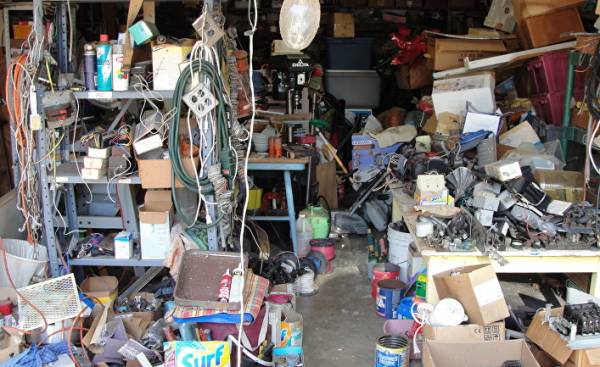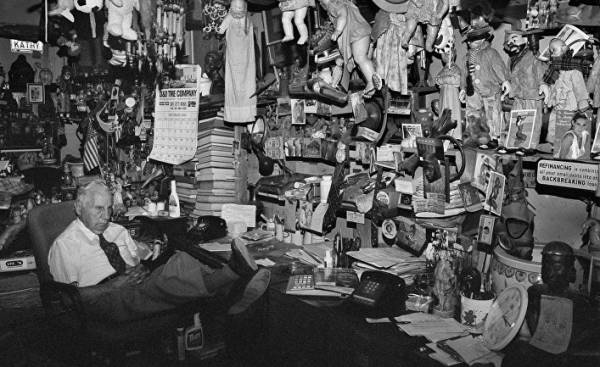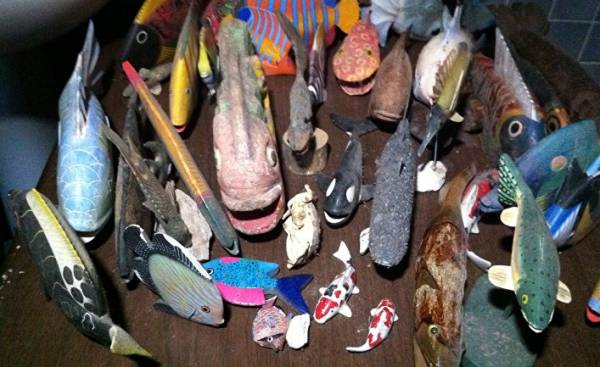
You know people who can’t get rid of useless or broken things and insist on maintaining them, arguing that they could ever need? These people suffer from one form of obsessive-compulsive disorder — syndrome of pathological hoarding, which in some severe cases can lead to death of its owner.
Who is sick of a syndrome of pathological hoarding?
The patient disorder, pathological hoarding may not get rid of things, regardless of whether they are broken or useless, whether it’s old magazines or newspaper, metal containers, paper, old clothes that no longer fit or are worn out, damaged or broken furniture and so on. The accumulation of these things are meaningless. They transform people’s lives in hell, hinder their movement, complicate the process of cleaning the room and serve as a source of insects and rodents.
Some people with this syndrome have a habit of keeping in their houses a dozen Pets, despite the fact that it is difficult to take care of them, not to mention caring for their own health.
The range of severity of the disorder patients ranges from moderate to severe. In some cases the disorder does not affect the patient’s life, but sometimes it can not only affect his life but to cause him serious harm.
 © flickr.com Michael LuskCиндром of pathological hoarding
© flickr.com Michael LuskCиндром of pathological hoarding
The symptoms of pathological hoarding:
— the complete inability to refuse any thing, regardless of its value, because it can be used by the patient or any member of his family.
— excessive attachment to private property, to such an extent that the patient does not allow anyone to borrow or use your things and not accept the fact that all things are temporary. The patient refuses to accept the thought of having to leave things in the house of another person.
— chaos in the house of a sick hoarding disorder makes it uninhabitable or perform certain tasks, such as cooking in the kitchen or the bathroom.
— storing a large number of unnecessary Newspapers, magazines, letters, food residue and debris disgust and nausea.
— keeping useless items such as paper napkins from restaurants, waste or lost hair.
— difficulty in organizing daily tasks and delayed decision-making, as a way of life.
— a feeling of embarrassment in front of others and the desire for isolation and lack of social communication, to avoid the condemnation of others.
Some psychological studies have shown that the causes storage of useless things people with compulsive disorder are:
— full confidence in the fact that someday they are going to need these things.
— the assertion that the things remind them of past happy times or are the memories of nice moments.
is the safety broken or damaged things is their source of self-protection and psychological comfort.
Can you distinguish the patients with syndrome of pathological disorders from collectors?
The syndrome of pathological hoarding facilitates discrimination against people who collect stamps, old magazines, coins, certain models of cars. Collectors searching for particular varieties of one and the same subject matter, sistematizirovat them, and after the show and brag about them in front of other people.
 © flickr.com Wiley WigginsКоллекционеры
© flickr.com Wiley WigginsКоллекционеры
Unlike collectors, patients disorder to collect anything and without any organization or systematization, and then leave things alone, not showing him any interest and are ashamed to show them to other people.
Collectors don’t get upset about the fact that everything in their house is stuffed with things that they collect, despite the chaos that appears because of this. But if people get upset, it is one of the symptoms of the disease.
Fall victim to the syndrome of pathological hoarding of any person of any age and economic situation. Despite the difficulties in determining the actual percentage of the number of people with this disorder and its prevalence due to the large number of patients who do not undergo treatment, and studies indicate approximately one million people suffering from this disorder in the United States.
According to some studies, there are genetic factors that affect the incidence of the disease, while some psychologists believe that people suffering from the syndrome of pathological hoarding due to acute psychological crises such as the loss of a loved person or loss of property caused by natural disasters (earthquake, fire, or hurricane).
Obsessive-compulsive disorder in children seems to be harmless and can only be viewed as a form of attachment to things that may be useful in the future. But soon may develop a real disorder and then with the patient will be difficult to deal with. This can lead to death of the patient after in their homes are getting a divorce rodents, insects and bacteria.
Brothers Colliery died under the tons of accumulated waste
Among the most famous cases of distress — brothers Homer and Langley Collier who died for obsessive-compulsive disorder in their own building in Manhattan in 1947. The body of one of them found under tons of magazines and Newspapers that they collected for a long time, and the other died from hunger or maybe because of the traps installed in the house, which was intended to keep people from entering their home.
The police found tons of weird things inside their house: a huge amount of collected Newspapers and magazines, broken furniture, waste bins, 25 thousand books, chassis from the old car, part of the horse-drawn carriages, hundreds of meters of fabric and silk which has never been used, human bodies were kept in saline solutions, automotive tyres and lot of scrap metal.
Bibliomania
Bibliomania — pathological passion for collecting books. The first sign of the onset of this disorder, which some experts attribute to a case of obsessive-compulsive disorder or the syndrome of pathological hoarding, is the arising of feeling strong emotions, when a person is in the library or looking at any book. Over time the emotion is transformed into an overwhelming desire to buy the book.
On a more serious stage of this disease the patient disorder buying as many books as possible and not even in one instance, only pretending to have exclusive possession and does not approve the use of his books by other people. The patient develops the fear that is present all the time that other people touch these books. Despite this, the American psychiatric Association does not recognize bibliomania a mental disorder.
Symptoms of bibliomania
The most common symptom is a severe passion for books. Patients with this disorder people keep books on the shelves of his library, but keep them in disarray, because you can’t distinguish the books or understand what it is. Therefore, they store books in basements or enclosed areas.
Among the most famous of people with this disorder sir Thomas Phillips, who died in 1872. He was obsessed with books. His collection consisted of about 160 thousand books and manuscripts. More than a hundred years his property was sold at auction.
 © flickr.com, Rikki / Julius RequeБиблиомания
© flickr.com, Rikki / Julius RequeБиблиомания
Another symptom: the patient disorder do not miss any of the book fair. They cause him an exaggerated joy and happiness in the case of his books.
The most severe disorder of bibliomania when a person steals a book, and sometimes many copies of the same books, without any logical reason and not feel the guilt. This disease is known under the name “bibliolatry”, which means the pursuit of stolen books.
Among the most famous criminals to commit theft of books from bibliolatry, Stephen Bloomberg. When he was arrested in 1990, he had discovered more than 23 thousand stolen books and rare manuscripts from libraries, museums and galleries, the cost of which was about five million dollars.







